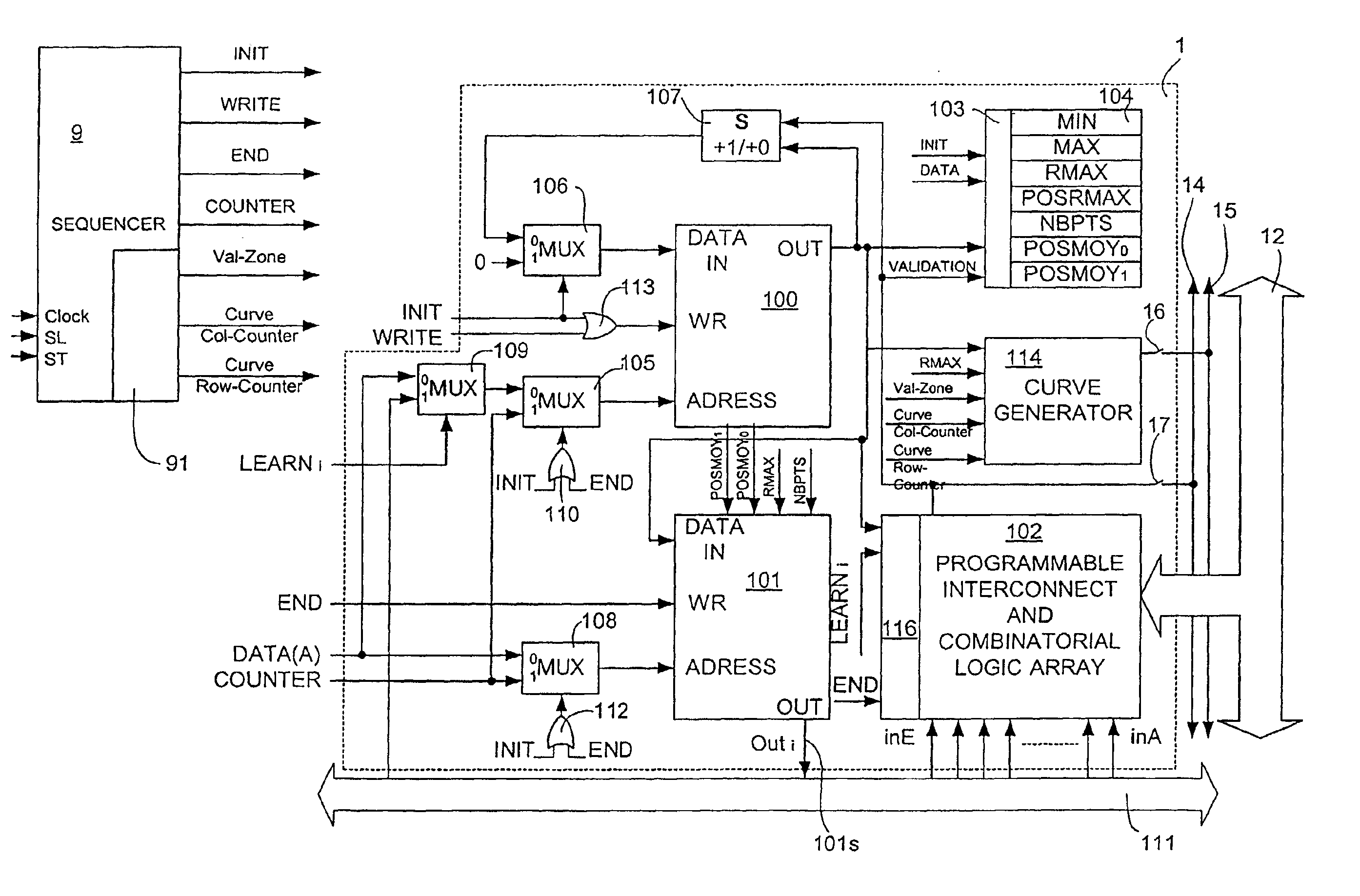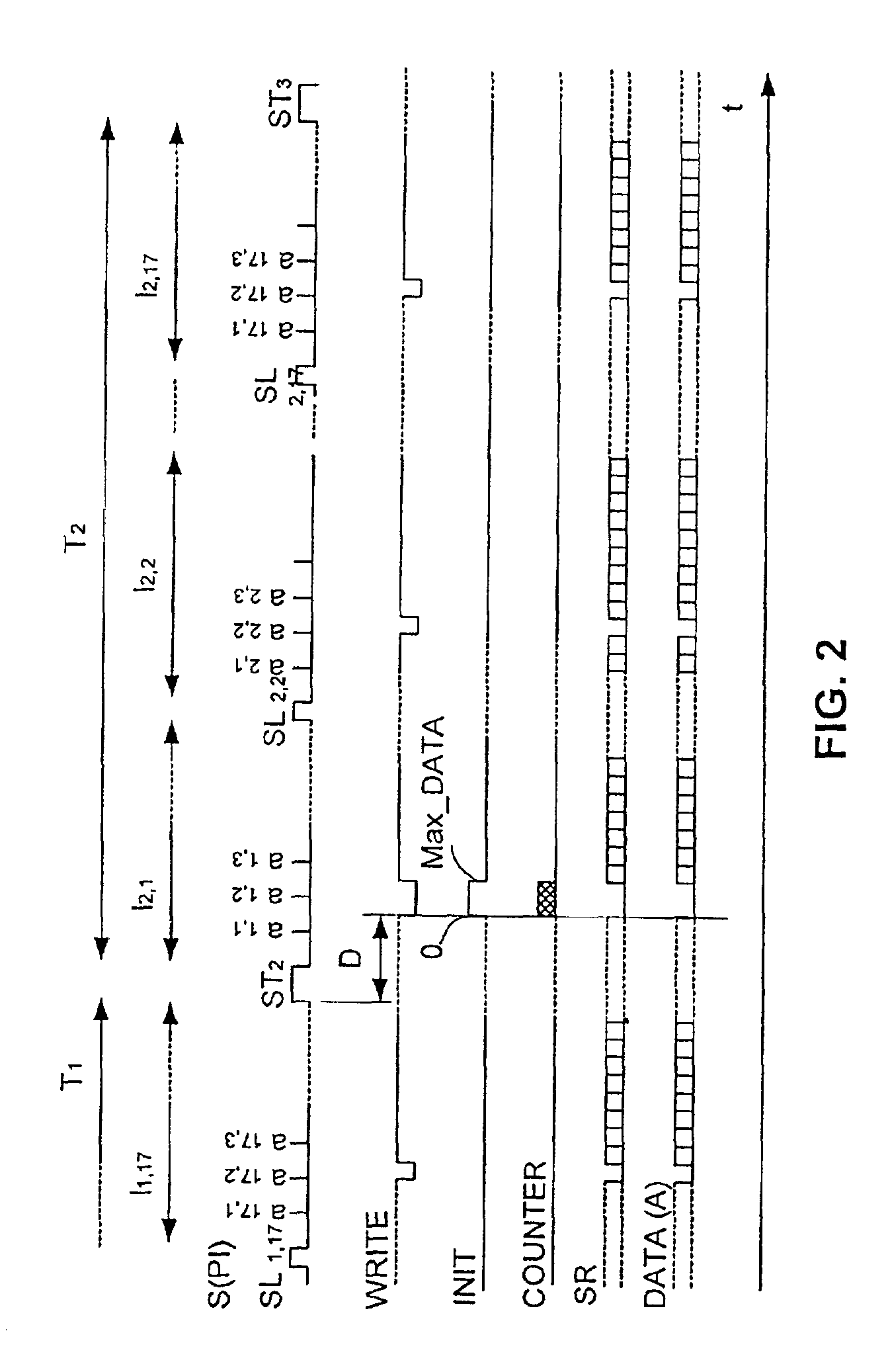Method and device for perception of an object by its shape, its size and/or its orientation
a technology of object shape and orientation, applied in the field of automatic visual perception, can solve the problem of inability to isolate a number of points greater than the fixed threshold, and achieve the effect of reducing the number of points
- Summary
- Abstract
- Description
- Claims
- Application Information
AI Technical Summary
Benefits of technology
Problems solved by technology
Method used
Image
Examples
first embodiment
[0154]A. First Embodiment of Classifier
[0155]With reference to FIG. 12, the classifier 101 fulfilling the self-adapting function comprises a memory 118 whose writing input terminal WR receives the signal END and the address input terminal ADDRESS receives the output signal of the address multiplexer 108.
[0156]Classifier 101 also includes a comparator 119 comprising two inputs and one output that is connected to the data input DATA IN of the memory 118.
[0157]The first input, Q, of the comparator 119 receives a value derived from an analysis output register 104 and its second input receives the output of the memory 100. In one embodiment, for example, the value received at the first input Q is the value RMAX / 2, derived from RMAX register 104 in conjunction with divider circuit 121.
[0158]Memory 118 of the classifier 101 preferably comprises the same number of words as the analysis memory 100, but in the memory 118, each word comprises one bit only.
[0159]At the end (e.g., signal END=1) ...
second embodiment
[0161]B. Second Embodiment of Classifier
[0162]FIG. 13 represents an alternative embodiment of the classifier 101 including a multiplexer 120 that is controlled by a selection control signal 124. Classifier 101 enables comparison of the parameter P to a statistical value Q, which can be prepared in various ways in relation to the statistical parameters received on the different inputs 0, 1, 2, 3 of multiplexer 120, which are selected by the selection control signal 124, which depends on the content of the register ‘SELECTION’. The input 0 of the multiplexer 120 receives the value RMAX / 2 produced on the basis of the data in the analysis output register 104 by the divider circuit 121, the input 1 of the multiplexer 120 receives directly the value RMAX, the input 2 of the multiplexer 120 receives a threshold value contained in a register ‘THRESHOLD’123 whose content is programmed outside the system, and the input 3 of multiplexer 120 receives the quotient of the number of points NBPTS b...
third embodiment
[0165]C. Third Embodiment of Classifier
[0166]FIGS. 13a, 13b, 13c represents another embodiment of a classifier in which the cumulative total of events is used in a histogram instead of the levels. The classification boundaries are defined, for example, by the use of a register RMAX, corresponding to a maximum of events for the analyzed parameter, and in searching for the parameter values for RMAX / 2. On both sides of the RMAX position, these values correspond to limit A and limit B of the classifier.
[0167]Hence, the RMAX register such as it is operated in the second embodiment of the classifier, is replaced here by the register NBPTS, corresponding to the total cumulative result of events (FIG. 13a). By removing a percentage k of NBPTS on both sides of the histogram, the limits A and B become more stable (FIG. 13b).
[0168]The device represented in FIG. 13c carries out this function.
[0169]In FIG. 13c, the analysis memory 100 and the command of the address multiplexer 105 are present. T...
PUM
 Login to View More
Login to View More Abstract
Description
Claims
Application Information
 Login to View More
Login to View More - R&D
- Intellectual Property
- Life Sciences
- Materials
- Tech Scout
- Unparalleled Data Quality
- Higher Quality Content
- 60% Fewer Hallucinations
Browse by: Latest US Patents, China's latest patents, Technical Efficacy Thesaurus, Application Domain, Technology Topic, Popular Technical Reports.
© 2025 PatSnap. All rights reserved.Legal|Privacy policy|Modern Slavery Act Transparency Statement|Sitemap|About US| Contact US: help@patsnap.com



